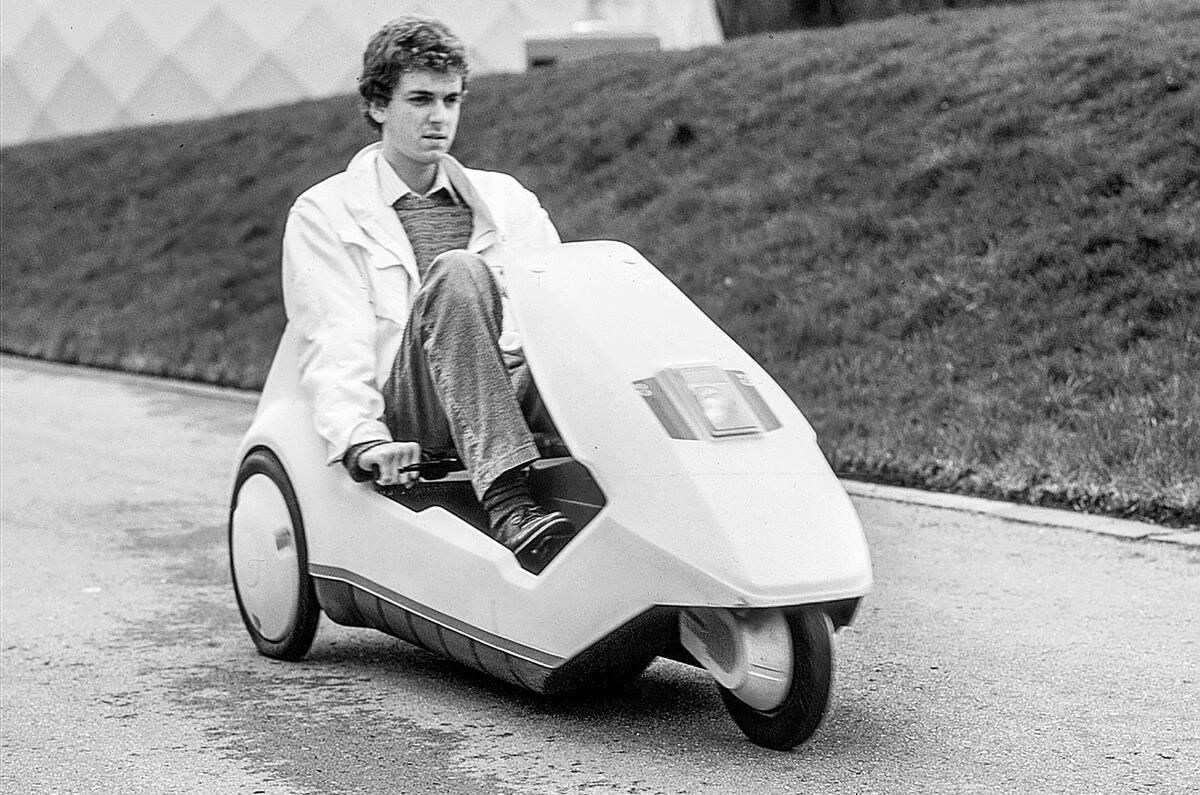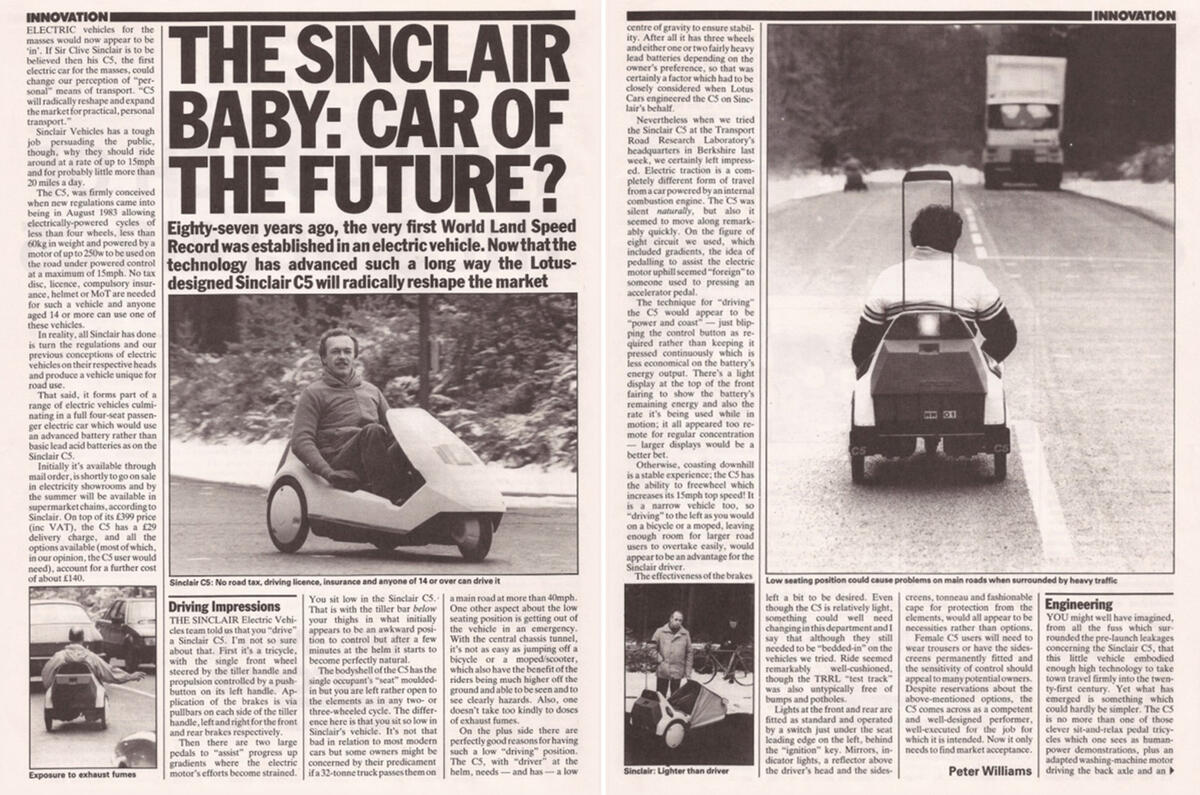If the tech wizards at Apple need a lesson in how a computer company should not set about cracking the automotive industry, they need only look at the brave but sorry tale of the Sinclair C5.
Flying high on the back of the success of home computers such as the ZX Spectrum, company founder Sir Clive Sinclair decided to make an electric vehicle that would, he said, “radically reshape and expand the market for practical, personal transport”.
The C5 was conceived when new regulations came into force in August 1983, allowing electrically powered cycles of fewer than four wheels, under 60kg in weight and powered by a motor of up to 250W to be used on the road under powered control at a maximum of 15mph. No tax disc, licence, insurance, helmet or MOT was required, and anyone aged 14 or over could drive one.
Engineered by Lotus and built at the Hoover plant in Merthyr, the C5 was initially available through mail order and electricity showrooms. It cost £399 (plus a £29 delivery charge), with all of the available options accounting for a further £140 or so. Options? Yes, despite launching the car in the depths of the British winter, it appears that the C5’s makers felt it acceptable to charge extra for mirrors, indicators, a tonneau cover and a ‘designer cape’ to protect occupants from the elements.
Nevertheless, the C5 was not completely without merit, as Autocar found when it tried one in January 1985. “The Sinclair Electric Vehicles team told us that you ‘drive’ a Sinclair C5. I’m not so sure about that,” wrote Autocar’s Peter Williams. “First, it’s a tricycle, with the single front wheel steered by the tiller handle and propulsion controlled by a push button on its left handle.
Application of the brakes is via pullbars on each side of the tiller, left and right for the front and rear brakes respectively.
“Then there are two large pedals to ‘assist’ progress up gradients where the electric motor’s efforts become strained. “You sit low, with the tiller bar below your thighs in what initially appears to be an awkward position but after a few minutes becomes perfectly natural.
“Electric traction is a completely different form of travel from a car powered by an internal combustion engine. The C5 is silent, naturally, but also it seemed to move along remarkably quickly, but the idea of pedalling to assist the electric motor uphill seemed ‘foreign’ to someone used to pressing an accelerator pedal.”
Problems were manifold, chief among them the occupants’ vulnerability to the elements, other traffic and exhaust pollution. “Some owners might be concerned if a 32-tonne truck passes them on a main road at more than 40mph,” wrote Williams.
Autocar concluded that the C5 was “a competent and well-designed performer, well executed for the job for which it is intended”, but the public failed to get as enthused, even with the promise of costs as low as £1.87 for 1000 miles of motoring.
Poor sales forced Sinclair Electric Vehicles into receivership before the end of 1985 and put paid to Sir Clive’s plans for a range of vehicles. He’d envisioned a full four-seat passenger electric car, and you have to wonder what might have been if he’d opted to launch the more conventional vehicle first.







Join the debate
Add your comment
I remember neighbour having
I remember it being great fun and soooo badly wanted one.
Perhaps it would have been more successful today with the advent of cycle paths and modern batteries